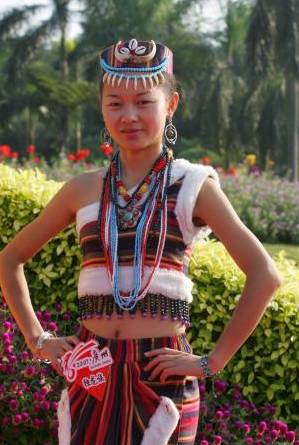Difference between revisions of "Derung"
imported>Superleila m |
imported>Superleila |
||
| Line 1: | Line 1: | ||
Population: 7,426 | Population: 7,426 | ||
| − | Major area of distribution: Yunnan | + | Major area of distribution: [[Yunnan]] |
Language: Derung | Language: Derung | ||
| Line 7: | Line 7: | ||
Religion: Polytheism | Religion: Polytheism | ||
| − | The Derungs live mainly in Dulong River valley of the Gongshan Drung and Nu Autonomous County in northwestern Yunnan Province. Their language belongs to the Tibetan-Myanmese group of the Chinese-Tibetan language family. Similar to the language of the Nu people, their neighbors, it does not have a written form and, traditionally, records were made and messages transmitted by engraving notches in wood and tying knots. | + | The '''Derungs''' live mainly in [[Dulong River]] valley of the Gongshan Drung and Nu Autonomous County in northwestern Yunnan Province. Their language belongs to the Tibetan-Myanmese group of the Chinese-Tibetan language family. Similar to the language of the Nu people, their neighbors, it does not have a written form and, traditionally, records were made and messages transmitted by engraving notches in wood and tying knots. |
[[File:Derung clothes.jpg|thumb|Derung clothes]] | [[File:Derung clothes.jpg|thumb|Derung clothes]] | ||
Latest revision as of 05:46, 11 June 2010
Population: 7,426
Major area of distribution: Yunnan
Language: Derung
Religion: Polytheism
The Derungs live mainly in Dulong River valley of the Gongshan Drung and Nu Autonomous County in northwestern Yunnan Province. Their language belongs to the Tibetan-Myanmese group of the Chinese-Tibetan language family. Similar to the language of the Nu people, their neighbors, it does not have a written form and, traditionally, records were made and messages transmitted by engraving notches in wood and tying knots.
Customs and traditions
Before 1949, Derung society maintained many vestiges of the primitive commune system. There were 15 patriarchal clans called “nile.” Each nile consisted of several family communes, and each commune occupied a separate territory marked off by boundaries such as streams and mountain ridges. The clan was further divided into “ke’eng,” or villages, where people dwelt in common long houses.
Agricultural production remained at a very low level until 1949, due mainly to the primitive nature of the Derungs’ farm tools. Every year saw several lean months when their diet had to be supplemented by food gathering, hunting and fishing.
The ke’eng members pursued collective farming on common land and held their hunting, fishing and gathering grounds in common. However, in modern times this system was slowly giving way to ownership of the means of production by blood-related families. Following financial difficulties due to illness or debt as a result of the imposition of taxes, land sales gradually led to the emergence of landlords. And rich households used to make seasonal workers and destitute children work for them.
The Derungs produced some primitive handicrafts, including bamboo and rattan articles and engaged in the weaving of linen. But the absence of both traders and towns made barter the only form of exchange.
The ke’eng was the grassroots organization of Derung society. Its members regarded themselves as being descended from the same ancestor. A Derung’s personal name was preceded by that of the family and his father’s name. In the case of a woman, her mother’s name was included.
Each ke’eng was headed by a “kashan” whose duties were both administrative and ceremonial. He also directed warfare and mediated disputes. The ke’engs were politically separate entities, which formed temporary alliances in times of great danger threatening from outside communities.
Marriage within the clan was forbidden and monogamy was the rule in recent times, but vestiges of primitive group marriage remained, such as several sisters marrying one man. Polygamy was also not unknown.
The Derung people, male and female, wear their hair down to their eyebrows in front and down to their shoulders behind. Both men and women used to wrap themselves in a covering of striped linen fastened with straw ropes or bamboo needles. The poorer ones would often have no other clothing but a skirt of leaves.
Girls tattooed their faces at the onset of puberty, with the patterns varying according to the clan.
The traditional ke’eng long house – made of logs in the northern areas and of bamboo further south – is made up of a large, oblong room which serves as the ke’eng’s common quarters, with two rows of smaller rooms at the back. Each small room has a fireplace in the middle and is the home of an individual family.
At one time, each ke’eng had a common granary, but this was replaced by granaries owned by small groups of families.
The Derungs are animists and make sacrificial offerings to appease evil spirits. Shamans, and sometimes the kashan, performed such rites. The Derung New Year falls in December of the lunar calendar. The exact dates are not fixed, nor is the duration of the celebration. Cattle are slaughtered as an offering to Heaven.
